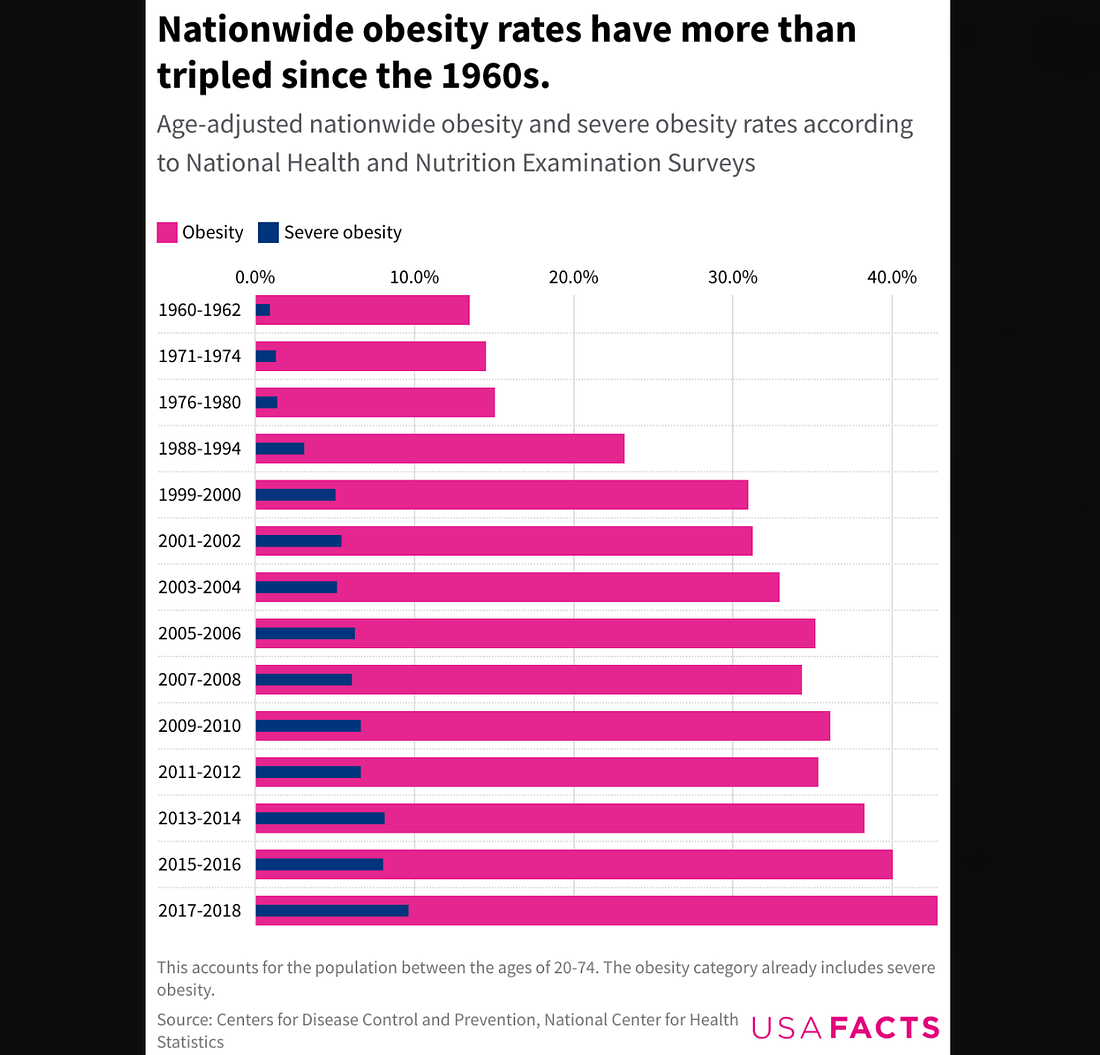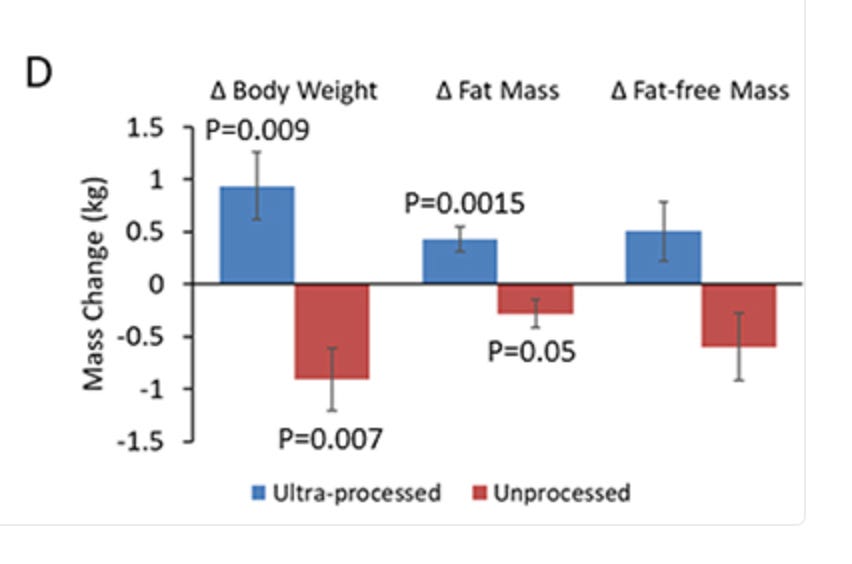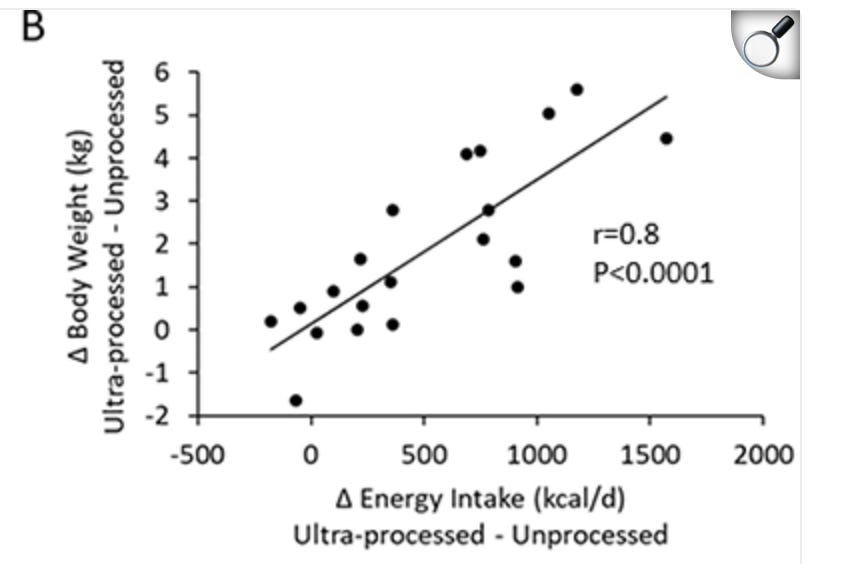Wellbeing: The Accelerating Obesity Crisis
Cysteine restriction plays a key role in weight loss
[po polsku piszą w Viki, , żę cysteina – to istotny składnik białek. MD]
| ROBERT W MALONE MD, MS JUN 19 |

This essay’s first section is an article published on June 17, 2025, on the NIH website and authored by Kendall K. Morgan, Ph.D.
I then go deeper into the causes of the obesity crisis in America and end up with a startling conclusion regarding ultra-processed foods.
At a Glance
- Studies in people and mice show a diet that’s low in the amino acid cysteine reprograms fat to burn more calories, triggering weight loss and reduced inflammation.
- The findings hint at strategies to improve metabolic health without restricting calories.
The standard advice for losing weight is to take in fewer calories than you burn through a combination of healthy eating and exercise. Studies have suggested that calorie-restricted diets may also slow aging and delay chronic health conditions to help you live longer.
To examine the effects of a calorie-restricted diet in people, a research team led by Dr. Vishwa Deep Dixit at Yale School of Medicine used an approach called metabolomics. They looked for changes to thousands of metabolites (compounds formed as our bodies break down food and store energy) within fat tissue samples taken from people after a year of calorie restriction and weight loss.
The tissue samples came from participants in a clinical trial called CALERIE, in which healthy young and middle-aged men and women reduced their calorie intake by an average of about 14% over two years. This reduction led to weight loss along with other metabolic benefits, including improved muscle health. Results from the new analysis appeared in Nature Metabolism on June 3, 2025.
The researchers found substantial changes in study participants’ fat metabolomes. A careful look at those changes revealed that calorie restriction came with an unexpected consequence: reduced levels of cysteine. The researchers also saw changes in a metabolic pathway to make cysteine.
To find out if lowering cysteine could lead to weight loss, the researchers created mice that lack the ability to make cysteine and gave them a diet restricted in cysteine but with plenty of calories. The animals lacking cysteine rapidly lost body weight. When cysteine was added back into their diets, the mice put the weight back on.
Further study revealed how low cysteine led to weight loss. The cysteine-deficient diet prompted white fat, which stores energy, to convert into brown fat, which burns energy to produce heat. When obese mice were deprived of cysteine, they showed a rapid browning of their fat as they lost weight. They also had lower levels of inflammation. The researchers found that these changes depended on signals from the sympathetic nervous system, which activates in stressful or dangerous situations.
In a related paper in Nature on May 21, 2025, another team looked at weight changes when mice were fed diets lacking individual amino acids. Similar to the study from Dixit’s team, they also found that a low-cysteine diet led to the most weight loss, with animals losing about a third of their body weight in just a week. The team also showed how cysteine restriction leads to widespread changes in metabolism.
“There’s a pathway in the body that can make cysteine,” Dixit explains. “During abundance it’s normally dormant, but if you’re getting less cysteine from your diet, your body activates this pathway in an effort to make more. And it appears that awakening this dormant pathway produces metabolic and health benefits.”
The findings point to an unexpected role for dietary cysteine and cysteine metabolism in body weight and overall health. They also suggest new strategies for addressing obesity-related health problems that might not involve cutting calories.
—by Kendall K. Morgan, Ph.D.
===================================================
References
Cysteine depletion triggers adipose tissue thermogenesis and weight loss. Lee AH, Orliaguet L, Youm YH, Maeda R, Dlugos T, Lei Y, Coman D, Shchukina I, Andhey PS, Smith SR, Ravussin E, Stadler K, Chen B, Artyomov MN, Hyder F, Horvath TL, Schneeberger M, Sugiura Y, Dixit VD. Nat Metab. 2025 Jun 3. doi: 10.1038/s42255-025-01297-8. Epub ahead of print. PMID: 40461845.
Unravelling cysteine-deficiency-associated rapid weight loss. Varghese A, Gusarov I, Gamallo-Lana B, Dolgonos D, Mankan Y, Shamovsky I, Phan M, Jones R, Gomez-Jenkins M, White E, Wang R, Jones DR, Papagiannakopoulos T, Pacold ME, Mar AC, Littman DR, Nudler E. Nature. 2025 May 21. doi: 10.1038/s41586-025-08996-y. Epub ahead of print. PMID: 40399674.
Going Deeper
Some thoughts on dietary L-cysteine.
As discussed in the above article, a calorie-restricted diet is a good way to limit cysteine consumption. A diet low in L-cysteine is linked to weight loss.
Fresh fruits, non-cruciferous vegetables (cruciferous = broccoli, kale, and cauliflower), and plant-based oils are all low in cysteine.
Although animal protein and high-protein plant foods contain cysteine, the benefits of a protein-rich diet are also significant.
L-Cysteine, weight gain, and ultra-processed foods.
Most commercial bread available in North America is an ultra-processed food. Commercially produced bread often contains added L-cysteine, as it is used as a dough conditioner and preservative to improve texture, extend shelf life, and make the dough easier to handle. It is sometimes derived from sources such as human hair, duck feathers, or hog hair. In fact, our friends at the World Health Organization have reported that using L-Cysteine in food production is a safe practice.
L-cysteine is not naturally abundant in wheat flour, so plain homemade bread and other home-baked goods have relatively low cysteine content compared to most of their ultra-processed counterparts.
L-cysteine is also commonly added to commercial crackers, tortilla chips, and flour tortillas as a dough conditioner. Adding L-cysteine to these foods means these products can contain moderate amounts of cysteine.
Labeling: L-cysteine may be listed directly on ingredient labels, often in parentheses after „dough conditioner,” but it is not required to be disclosed if it is used as a processing aid for other ingredients.
Therefore, simply reading the package insert will not answer the question of whether L-cysteine has been added to the product.
Ultraprocessed foods and weight gain.
If you have stuck with this essay thus far, let’s go a little deeper into what is causing weight gain in Americans.


Of course, the link between obesity and chronic diseases, metabolic health, and decreased longevity is well known. So, what is causing the increase in obesity among Americans?
Ultra-processed foods are linked to obesity.
A landmark NIH clinical study placed study subjects on either an unprocessed or ultra-processed food diet. The results of this study indicate that eliminating ultra-processed foods from the diet leads to a decrease in energy intake. This resulted in weight loss of those on the unprocessed diet, whereas a diet with a large proportion of ultra-processed food increased energy intake and led to weight gain, including gains in body fat.

The results from the study, which only lasted one month, were significant. Below are some of the graphs from that study





.
Pattern Recognition: It Seems So Simple
It doesn’t take a genius to see a pattern emerging between increased L-cysteine consumption in the diet, ultra-processed foods high in L-cysteine, and the dramatic weight gains seen in most Americans over the past couple of decades.
Of course, increased sugar, simple carbohydrate consumption, bad fats, and other food additives found in ultra-processed foods are also to blame. As is the food science designed around making ultra-processed foods more palatable and appealing, while neglecting to account for health effects.
However, we now know that increased L-cysteine in the diet has been linked to weight gain, and ultra-processed foods often have added L-cysteine, which has also been linked to weight gain. Shockingly, L-cysteine can be added to foods without any labelling requirements whatsoever. Therefore, consumers are unaware of the amount of L-cysteine added to the foods commonly purchased in grocery stores.
So, one has to ask how clear a signal must be before the government begins to take notice? At a minimum, labeling requirements for L-cysteine additives should be strengthened to enable consumers to make informed choices. Optimally, adding L-cysteine to food should be banned.
